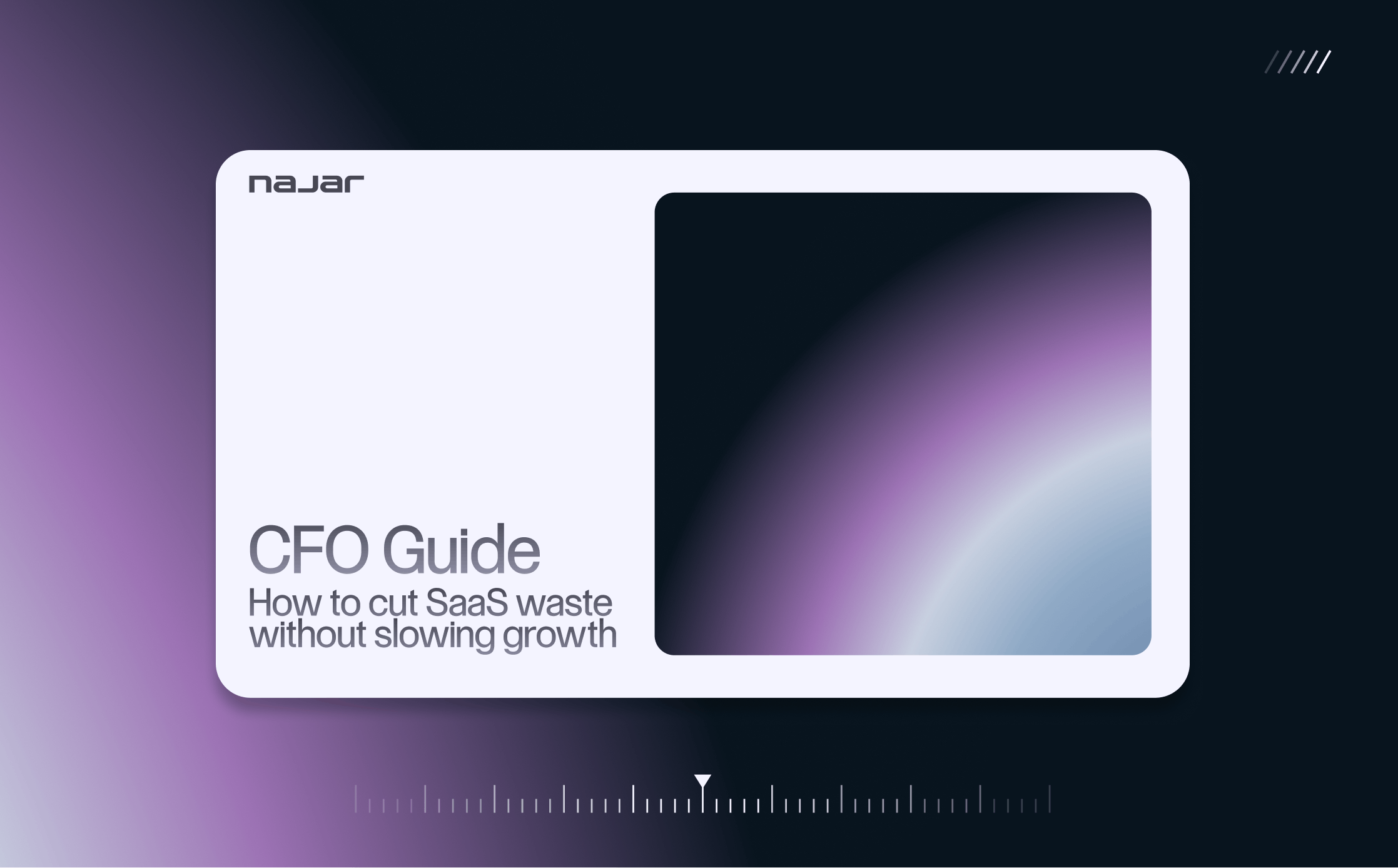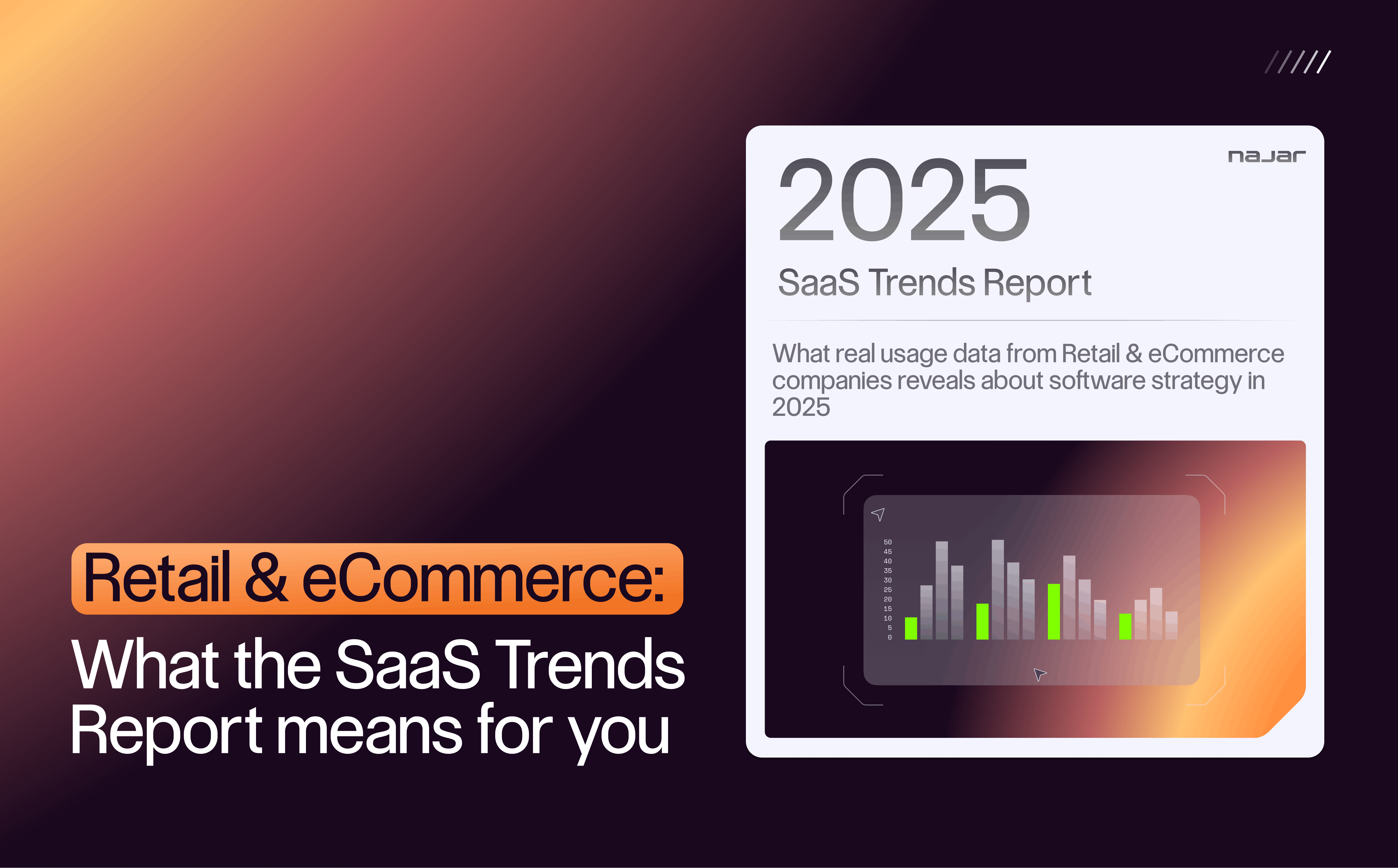The software market has been changing dramatically over the past few years, with the migration from on-premise to SaaS software. The use of these cloud tools and applications has been greatly accelerated by the COVID-19 pandemic. While they were previously considered an option, they have become indispensable to companies to ensure business continuity. Beyond their convenience and functionality, a study shows that the number one reason companies choose SaaS solutions is to improve performance (31%).
Companies are right to believe that cloud software is going to boost their organization and efficiency. But getting there often requires a painful, time-consuming and expensive procurement process. While the implementation of tools is getting easier and easier, it's hard to justify the complexity of the SaaS procurement process itself. Especially since many companies, perhaps including yours, don't have anyone in the purchasing role.
How do you set up a rigorous and efficient purchasing process that integrates both functional business requirements and non-functional IT requirements, even without a dedicated department? Let's take a look at the 8 steps that make up the SaaS software sales/purchasing cycle, from the buyer's expression of need to the implementation of the SaaS contract ... and how to improve them so that your team doesn't waste time or money on them!
From the expression of need to the SaaS contract: a purchasing process in 8 steps
1/ Identify the need
It all starts with the identification of the need, from the employee(s) who is going to be the future users of the SaaS solution. Often, the need is expressed in one way or another, even involuntarily, before being identified as such. It could be the explosion of customer support tickets and the difficulty to manage them with the current tool, or workflow breakdowns for example.
Once the problematic situation has been identified, and if it is indeed linked to a lack of technology in the processes, a specification must be established. This detailed specification defines the functional and non-functional contours of the future SaaS software that will meet the expressed need. It's very useful to break down each of your needs into user stories to be sure you are going in the right direction.
What should your specifications contain? Express the precise need for the SaaS solution, quantify it, indicate the purpose and objectives, set the service and customer support requirements, define the dedicated budget in coordination with the finance team, etc. You can of course add any specific criteria that matter to your company, such as CSR commitments for example. The specification is the foundation of your cloud purchasing process.
Bonus: do workshops with each level of users for each feature to better define your needs.
2/ Sourcing SaaS suppliers
Once your specifications are clear and validated by your teams, it's time to start looking for SaaS vendors that meet the expressed need. How do you do the sourcing? Online research is the most obvious way. With a Google search, your buyer, or dedicated research collaborator, can already find all the solutions specialized on solving these challenges. He can consult the functionalities of each software, the first data on the price, etc. However, it is not always easy to sort through all the results and identify the tools that are most aligned with your organization's needs.
Ideally, to complete this online vendor search, you ask your network for the SaaS tools used by their team to establish a mini-benchmark. On the one hand, you have confirmation (or not) that the solution you are considering matches your needs, and on the other hand, you have more precise information on pricing. This allows you to know if the budget established in the specifications is realistic or if it needs to be adjusted. This remains a complex part because the data is not public and there are often confidentiality clauses in the contracts.
With this sourcing step, you collect the first information and can exclude the suppliers who do not check all the boxes, to select only 3 or 4 to go further. There is no point in moving forward with a SaaS vendor that does not meet the requirements of your IT department, for example.
3/ Perform SaaS software demos
The next step is to conduct demos of the pre-selected solutions. With the development of the SaaS model, these have become common. They are easy to organize and present. This is the perfect time to check your user stories live.
It is up to you to determine who participates in the team, whether it is your designated buyer, the end user of the solution and/or members of the IT and finance teams. During the demos, you will be able to ask any questions you may have to ensure that the product meets your initial needs. This is also a good time to review the technical aspects and check that the prerequisites are well mastered.
Bonus: you will be able to see live if everything described on the website from the SaaS editor is effective, or if, surprise, the desired functionality will not be available for several months. It's normal to communicate your vision, but if you need some features immediately, it could affect your choice.
4/ Compete SaaS offerings
The next step is to get a formal, comprehensive bid from each SaaS vendor still in the running. If you're in a regulated market, which requires a traditional RFP, this is the time to build the case and send it to your prospective vendors.
The mistake to avoid at this stage, even if you are not required to receive at least 3 separate quotes? Soliciting only one supplier! As always, the best practice is to put vendors in competition in order to have negotiating leverage. Yes, even if you already have a very clear idea of the SaaS solution you want to use.
At this stage of the buying/selling cycle, SaaS vendors should provide you with a formal offer and all the data on the cost of their application or software.
5/ Compare the offers
All the offers have been transmitted and the demos carried out. All that remains is for your buyer, or your employee dedicated to this research, to "translate" the offers from SaaS publishers. This means centralizing the offers and comparing them according to a single evaluation grid. To create this matrix, simply use the criteria defined in your specifications (cost, features, etc.).
At the same time, it's time to perform due diligence:
- Technical, on the one hand, to ensure that the software or SaaS application under consideration meets the requirements of your IT department. Beware, this can take time!
- Customer, on the other hand. It is quite possible - and even recommended - to ask the suppliers you are discussing with for the names of a few customers (and not those present on their site ideally) to get their opinion on the solution. This requires a little time but allows you to pay attention to some specific points and choose the best product for you.
6/ Check the compliance of SaaS suppliers
This step is crucial in the SaaS purchasing process. The question of compliance is raised on two levels: first, the Know your supplier (KYS) approach. Literally "know your supplier", it is about confirming the identity of a third party and showing that your organization has ensured the compliance of the supplier. This part is done by your purchasing team and/or your finance and legal team.
Another part of compliance that is important is compliance with the GDPR. This is especially crucial in SaaS purchasing because you need to make sure that the data that passes through the SaaS software is well protected and will not be used for unauthorized purposes.
7/ Negotiate vendor’s offers
That's it, you've gone through all the steps - a bit tedious, we grant you, but necessary - of your purchasing process and you've selected the partner you want to go further with. There is one step left, and not the least: negotiating your SaaS contract.
It is too often neglected by teams, especially when there is no dedicated purchasing department. One of the main reasons for this is the lack of information on your bargaining power due to a lack of transparency of publishers on their prices. From one player to another, in the same industry, selling prices can go from simple to double: making data-driven purchases can avoid you from making hasty decisions.
The negotiation of your SaaS contract is not only about the price: renewal model of the tool, included features, service and customer support commitments, etc... These are all elements you can play on to get the most advantageous contract. Try it, you will see that the SaaS vendor is ready to negotiate too!
Bonus: software editors love satisfied customers, so there's nothing better than planning a mutual action plan based on your business strategy and the results expected from each of you over the long term. Multi-year commitment with annual upfront payment is also a great negotiation lever.
8/ Finally, sign the SaaS contract !
Have you reached an agreement? Good for you! It's time to set the terms of the SaaS contract, sign it and make your first payment to be officially committed.
A point of attention at this stage: the document (commercial contract or purchase order) established between the SaaS publisher and your company must indicate the conditions of breach of contract, after-sales service as well as the competent jurisdiction in case of dispute. It is better to protect yourself beforehand!
All these steps constitute the ideal SaaS purchasing process to be implemented in your company. It is methodical and rigorous and allows you to optimize your teams' time on this subject. However, it remains quite time-consuming for your teams. This is why outsourcing your SaaS purchases is interesting.
Why outsource your SaaS purchasing?
The SaaS procurement process is complex, especially if you are not a specialist in the art of procurement, and your company may not have a dedicated team. But it's critical: the faster your teams can get the SaaS solution that meets their needs, the more efficient they will be. SaaS procurement is exactly the answer to this problem.
The service provider is an expert in the field and knows the market inside out. Where you have no information on the usual costs of different SaaS solutions, he has a precise benchmark that allows you to situate yourself. You can finally make a data-driven decision. Moreover, it is also the procurement provider who does all the research for you - faster and more efficiently, thanks to its knowledge of the market.
Having a formal and rigorous SaaS purchasing strategy is necessary so that your teams spend as little time as possible on it and can focus on their core business. If you want to optimize their time even further, you can use a SaaS procurement specialist like Najar.



